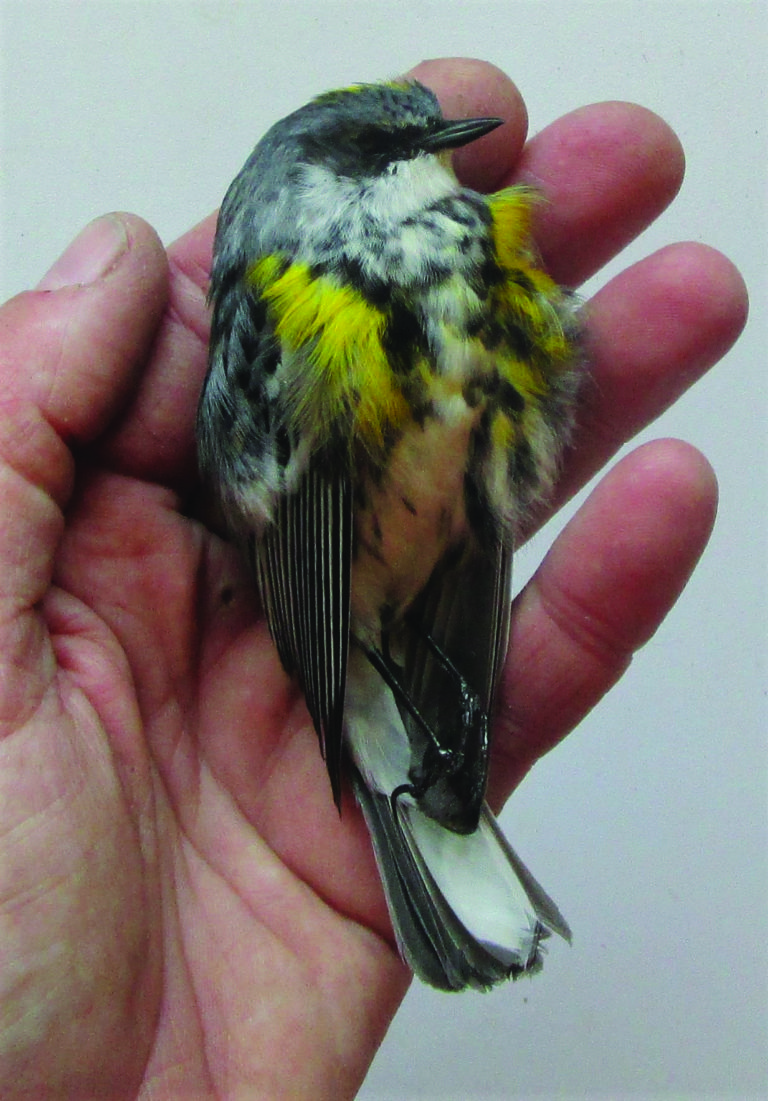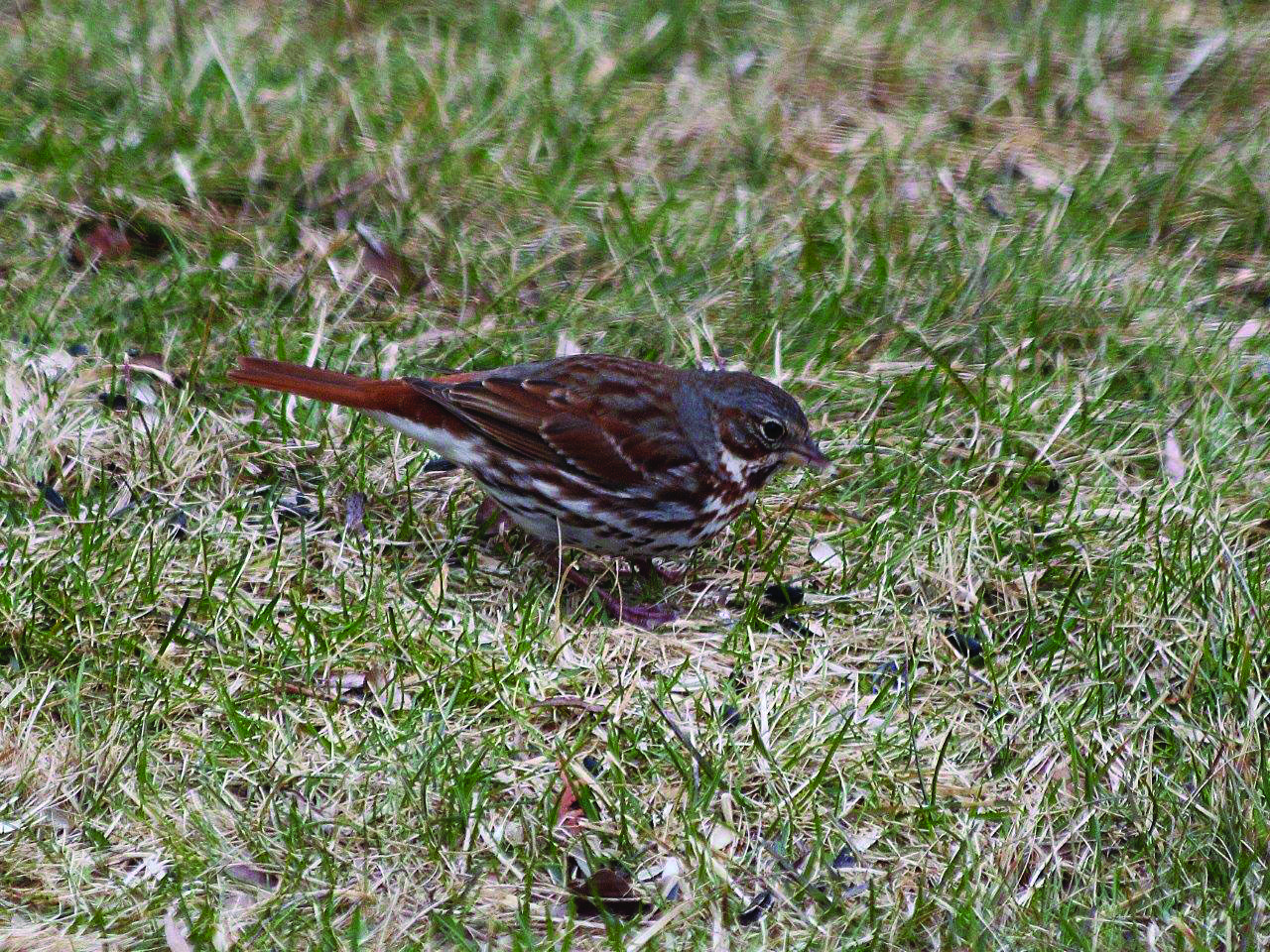
By Kathlean Wolf, with Jan Axelson
Northside News
In mid-April, as an unusual weather system delivered sleet, freezing rain and finally as much as 6 inches of snow, a crisis was brewing in the urban wilds of Madison. While humans retreated indoors between bouts of snow-shoveling, wild birds crowded feeding stations, seeking out enough food to keep themselves warm in the bitter cold.

Just before the storm arrived, I’d come upon a small, beautiful bird, a yellow-rumped warbler, who’d evidently burned through his reserve energy and frozen to death. This was my first hint that our wild bird populations could be in trouble. Later, I spotted over 50 robins huddling in the gully of Castle Creek. The berries of the nearby Mountain Ash were the only food not locked in ice.
Soon the social media grapevine was full of calls to help our urban wildlife. Northside residents responded: people who regularly stocked feeders increased the amount of food they left out and added mealworms for the insect-eaters, such as warblers and robins. Many people who rarely or never fed wildlife also placed food out for animals in need, and several rescued lethargic birds from the cold. Dane County Humane Society’s Wildlife Center took in over 70 animals in the week of the storm, the majority of them birds. Like my warbler, some of these birds didn’t make it, but in many cases human intervention did make a difference.
Jan Axelson, a resident of the Cherokee Park neighborhood, reported, “In an average year, we’re lucky to see one or two fox sparrows in the spring. This year around the time of the April snowstorm, we, like many others, had as many as eight in our backyard for days at a time. We scattered generous amounts of sunflower seeds for them, and when the wind finally shifted to the south, the birds were gone, on their way north to their breeding grounds in Canada.”

Within days the weather shifted from winter to spring. The flock of robins resumed plucking worms from grass wherever the snow had cleared, and males postured and squabbled in preparation for the mating season.
Studies have shown that cities like Madison, with a multitude of flowering plants in yards, gardens and parks, can provide an oasis for pollinating insects, such as native bees and butterflies. Are humans having a similar positive impact on wild bird populations? Wildlife may be at its healthiest in the wild, but in an urban environment, these birds had access to something that even the most well-protected wildlife refuge does not have: bird-loving humans who provided supplemental food in a crisis.